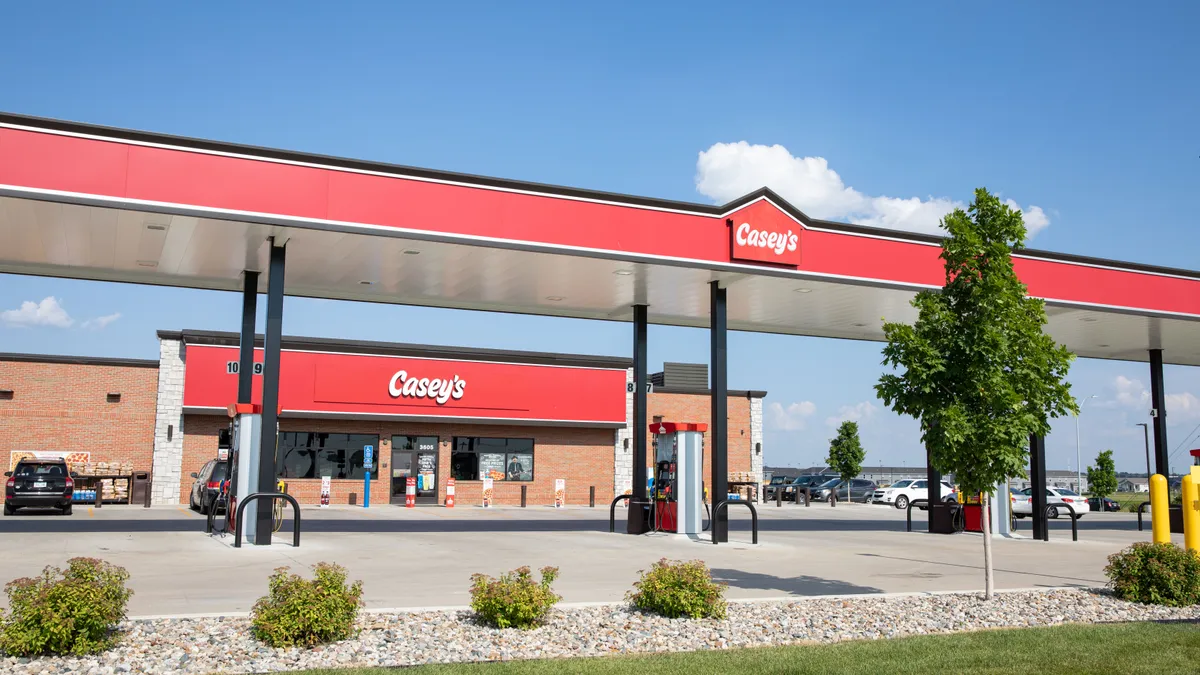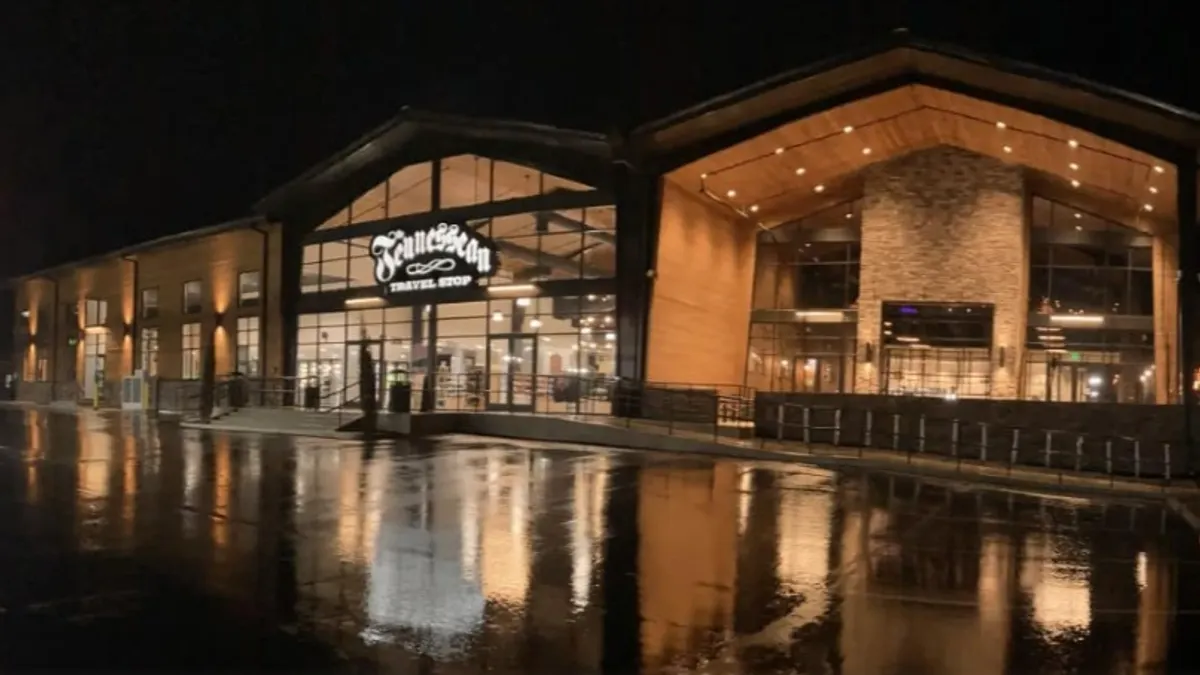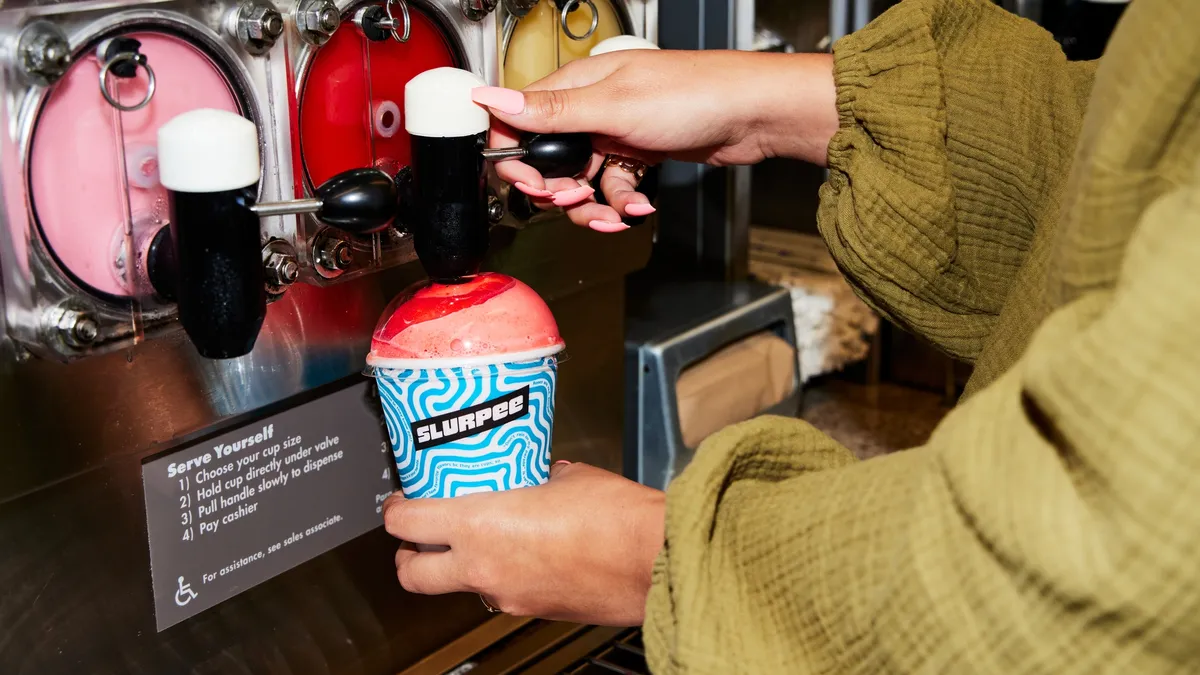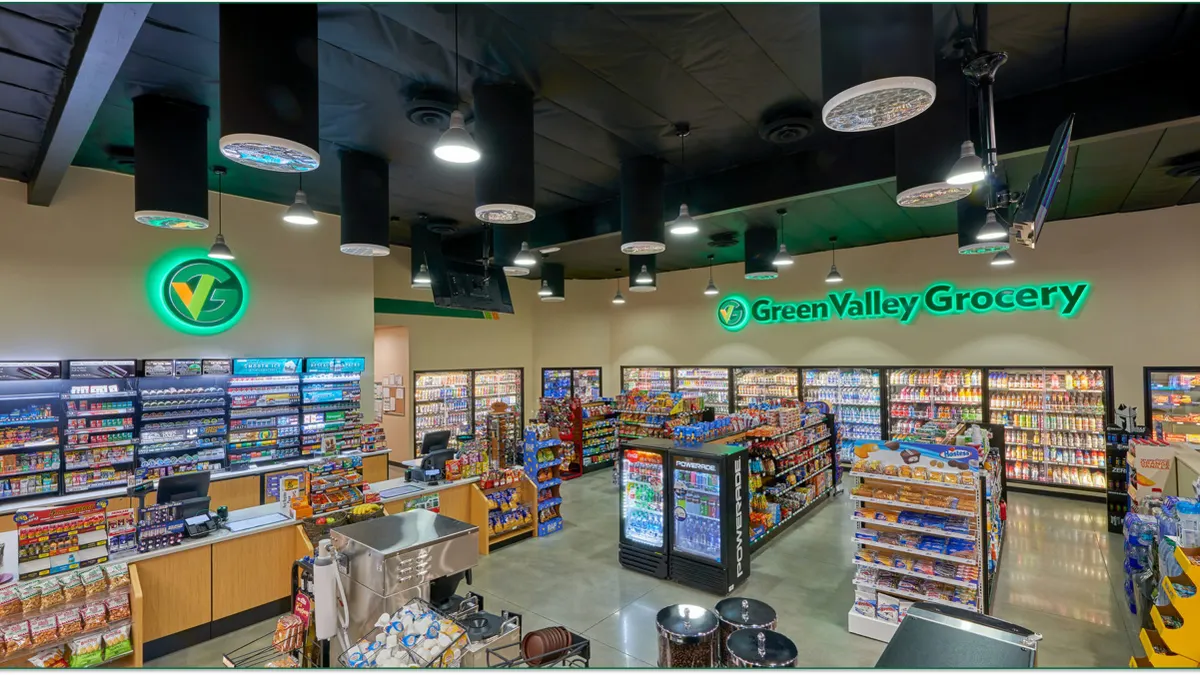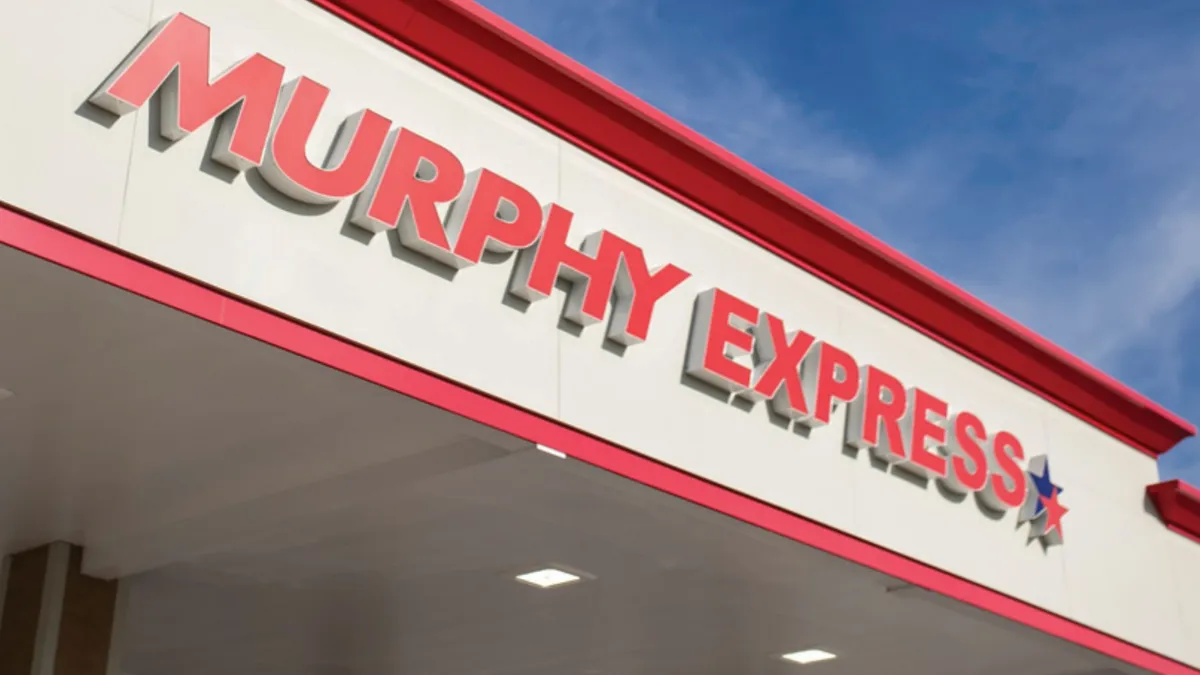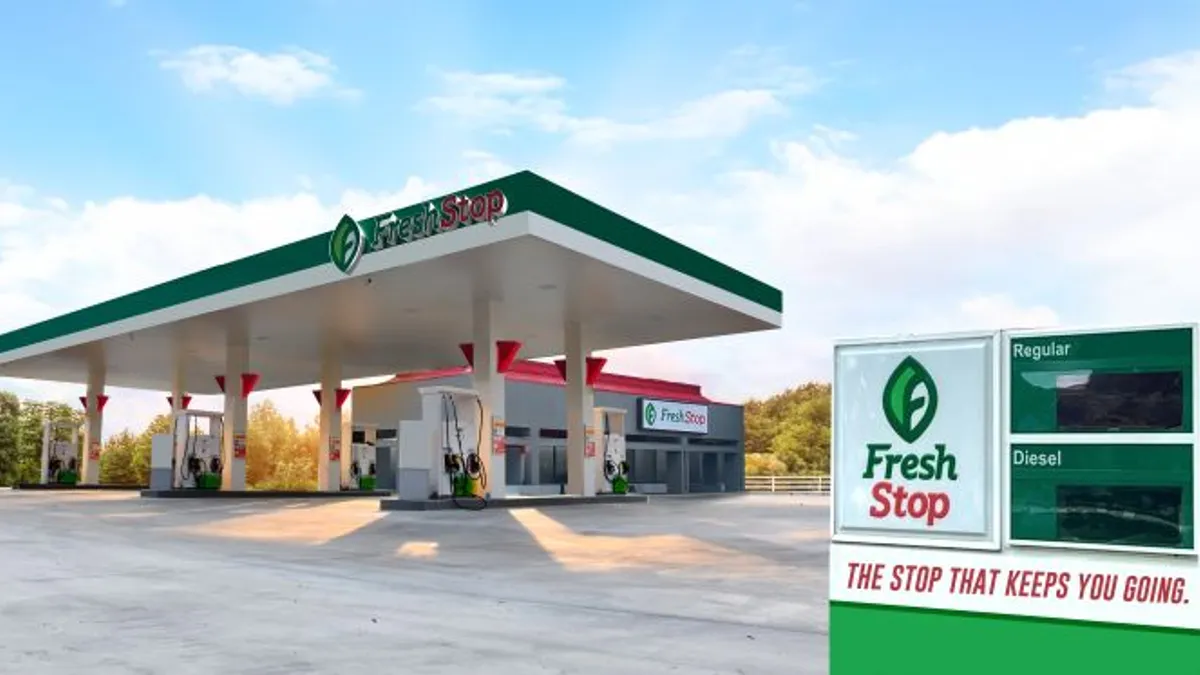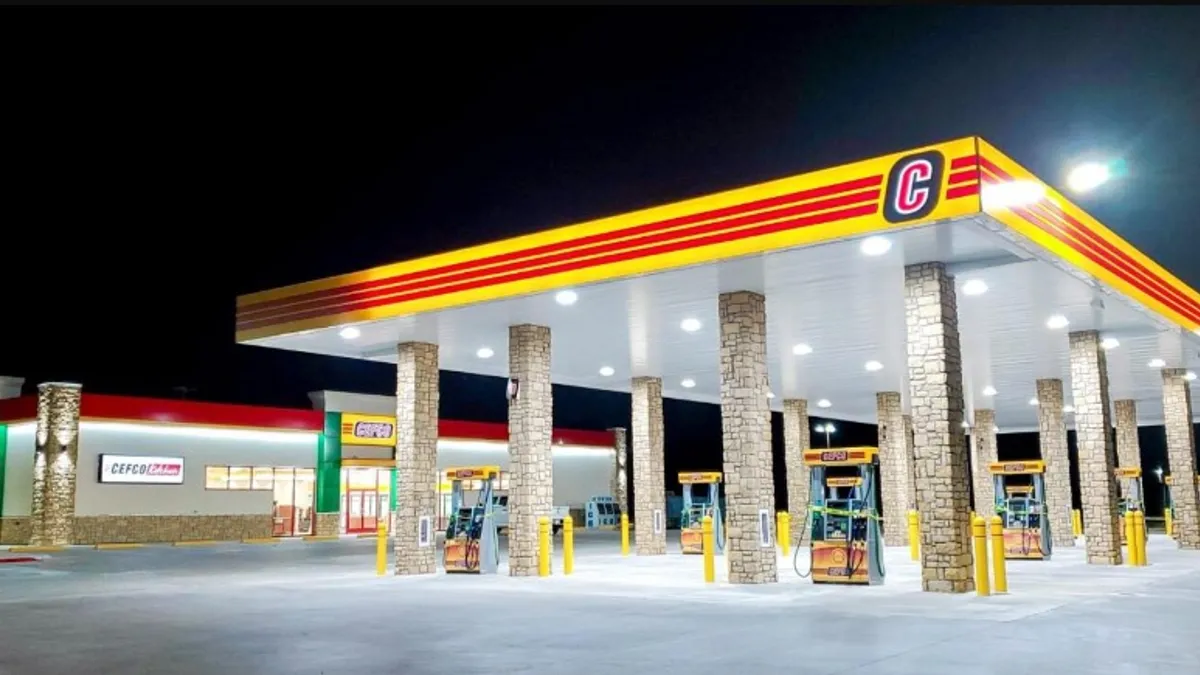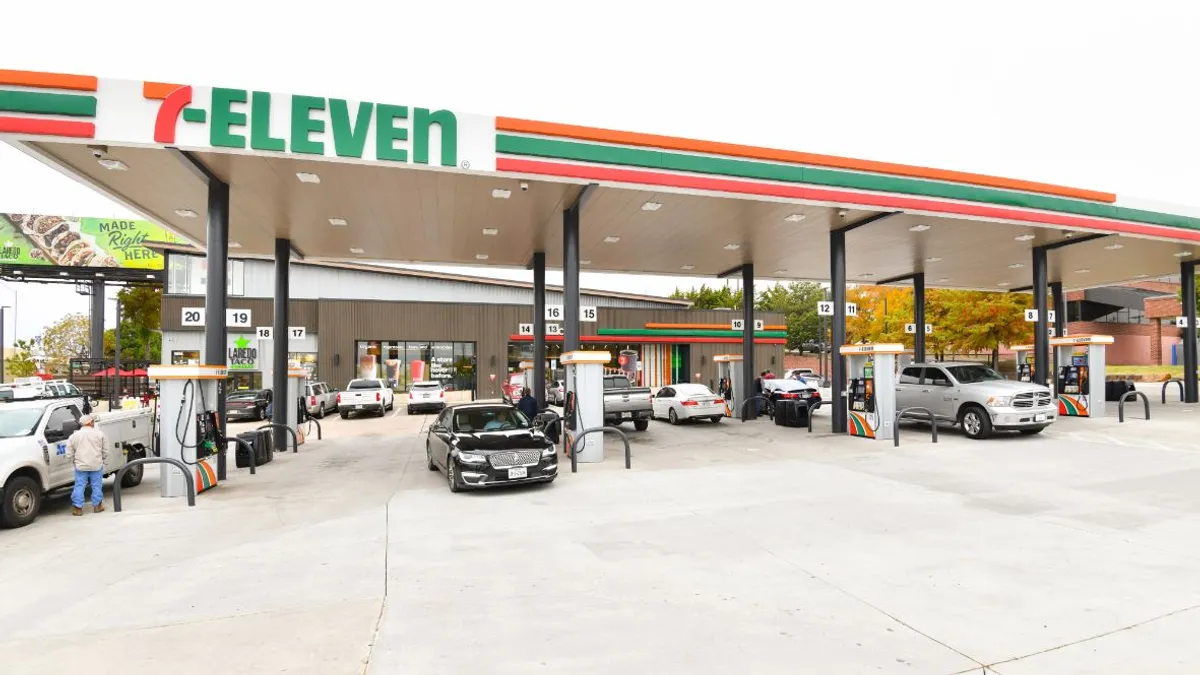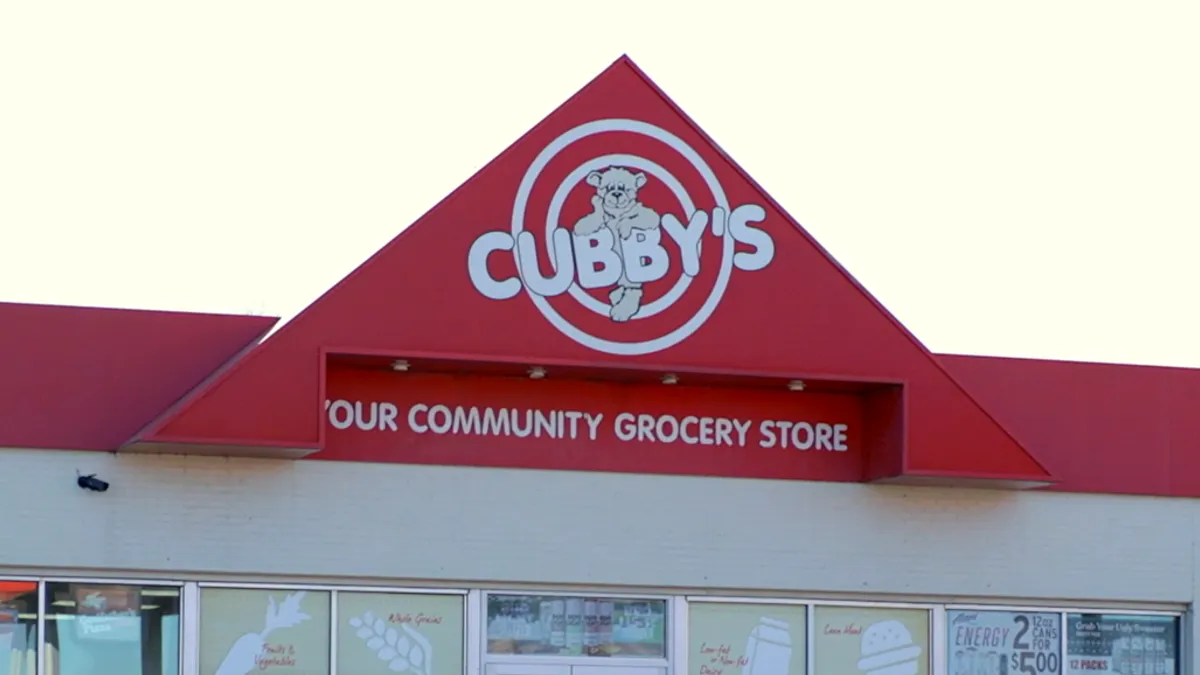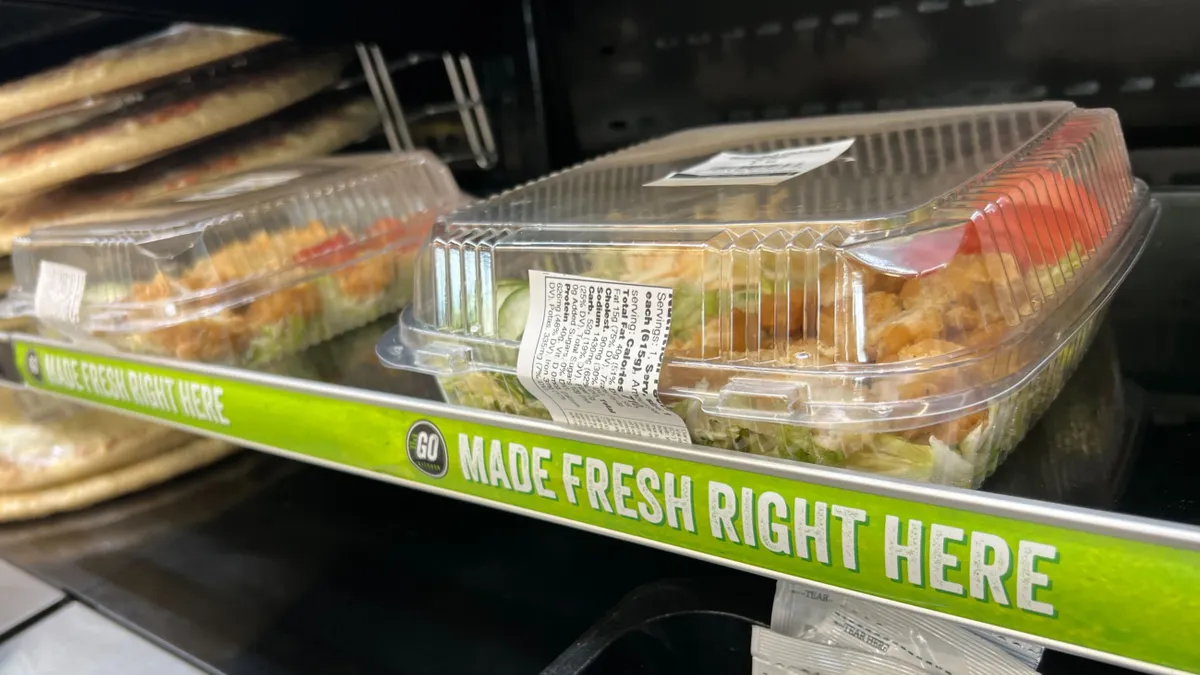Speaking to a room full of investors Tuesday in New York, Darren Rebelez didn’t take long to break down Casey’s General Stores’ earnings before interest, taxes, depreciation, and amortization (EBITDA) target for the next three years.
It’s a familiar target for investors, since Casey’s achieved it between 2020 and 2023.
“We plan on delivering top quintile EBITDA of eight to 10% — again,” Rebelez, CEO of Casey’s, said during the convenience retailer’s investor day presentation.
Rebelez then gave the floor to Chief Financial Officer Steve Bramlage, who outlined how the retailer plans on hitting that goal: By fiscal 2026, Casey’s plans to grow its store count by 350 locations through a combination of newly built and acquired sites.
“We have ample liquidity to be opportunistic for potential acquisitions and remain nimble to continue to invest behind building new units,” Bramlage said.
Target the smaller players
While larger acquisitions like its 94-site purchase of Bucky’s c-stores in 2020 are on the table, Casey’s is looking to acquire “small” operators — those with between 1 and 50 locations in their networks — according to multiple executives during the presentation.
“That is the existing playbook that we've been running,” Bramlage said. “But we do have the financial and operational flexibility to transact on the larger acquisition if it's a strategic fit [and] if the price is right.”
Small operators are ideal acquisition targets due to a variety of factors. Generally, many of these retailers are struggling to stay afloat amid rising operating and maintenance costs and credit card fees, Brian Johnson, Casey’s senior vice president of investor relations and business development, said during the presentation.
These retailers often don’t have a “meaningful” foodservice offering, nor do they have the money to improve their stores by installing kitchens or doing general maintenance, Johnson noted. It’s also difficult for smaller operators to have a digital loyalty program or a sound private label offering.
Beyond that, smaller retailers are likely experiencing volume loss and pressure both inside and outside the store, and many lack the scale to combat merchandise cost increases, Johnson said.
“Scale means more now than it ever has before,” Johnson said. “And while the smaller transactions may not always grab the headlines, in our opinion, they're an excellent way to drive shareholder value.”
Growing organically
Although Ankeny, Iowa-based Casey’s is mostly located in the Midwest, it doesn’t operate in 75% of the towns with a population between 500 to 20,000 within its distribution radius — meaning there’s plenty of opportunity to expand, Kendra Meyer, Casey’s vice president of real estate, said during the presentation.
According to the presentation, Casey’s has pinpointed a number of potential expansion states to target during this three-year stretch, such as Colorado, Texas, Louisiana, Mississippi, Alabama, Georgia, North Carolina, Virginia, West Virginia and Pennsylvania.
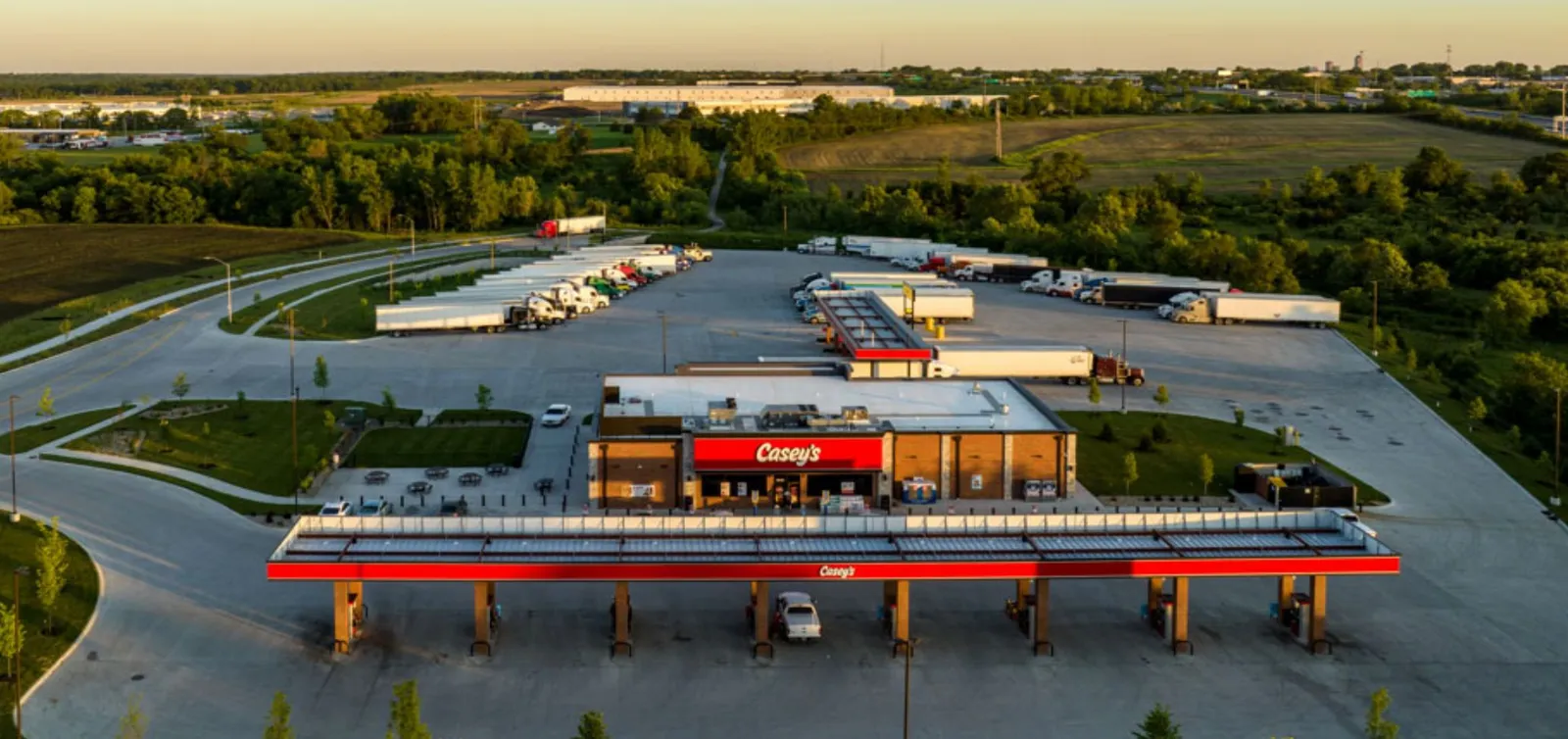
When scoping regions for new builds, Casey’s uses a “market attractiveness scale,” which is founded on four pillars: historical performance of stores within that area, the area’s competitive landscape, market economics and regulatory matters, Meyer said.
“We validate premier locations based on site-specific sales expectations, and can then determine the best approach to entry — acquisition or an organic build,” she said.
Casey’s initially had locations only on rural routes, but the retailer has integrated into suburban areas over the years, allowing for even more growth opportunities in a variety of store formats, Meyer noted.
“We've expanded our store formats to increase market penetration and meet guest needs in areas we may not be able to serve otherwise,” Meyer said.
Old and new formats
Casey’s smallest format is 3,2000 square feet and mainly designed for rural areas, according to the presentation. These locations cost about half as much to build or refurbish as Casey’s standard stores — which are about 5,000 square feet and made for suburban markets — and have a smaller sales floor and fewer restrooms, Meyer said.
“With multiple prototypes, we're well positioned to optimally deploy capital and expand our footprint,” Meyer said.
But as Casey’s embarks on its three-year growth plan, the company is also exploring more non-traditional stores. Stores in its largest format yet, 7,800-square-foot travel centers, offer showers, laundry, overnight parking and interior seating.
Although Rebelez did not clarify how many travel centers Casey's currently operates, he noted that these locations have “performed really well” for the company to date. He also said that while Casey’s hasn’t found the right opportunity to grow travel centers at scale, it’s open to expanding this concept moving forward.
“We put quite a bit more due diligence into [travel centers] because they cost about double what our normal stores do,” he said. “We want to make sure we get those right.”


